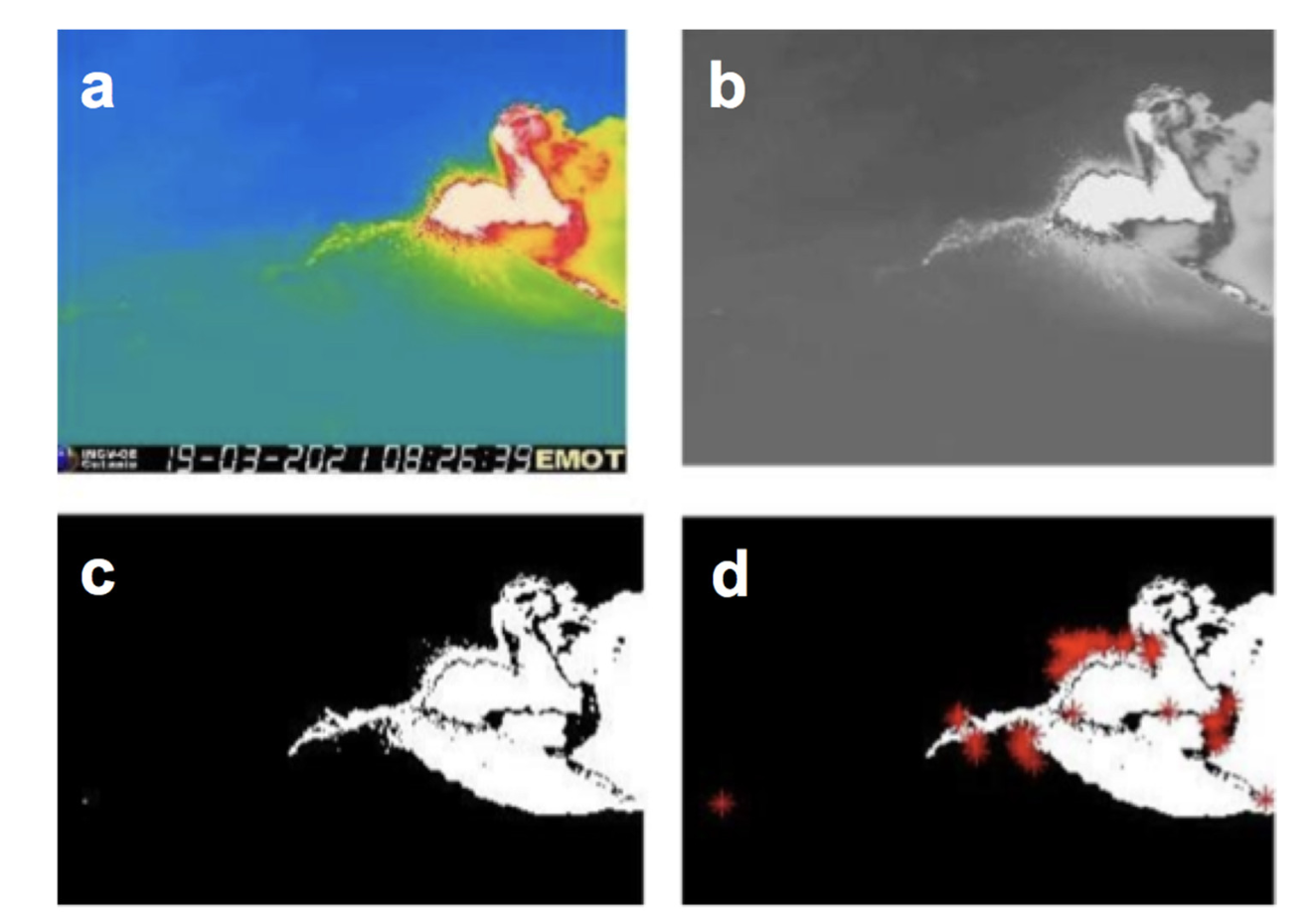Sicily
Comparison between Automated and Manual Detection of Lava Fountains from Fixed Monitoring Thermal Cameras at Etna Volcano, Italy
Sonia Calvari, and Giuseppe Nunnari
problematic: Comparison between Automated and Manual Detection of Lava Fountains from Fixed Monitoring Thermal Cameras at Etna Volcano, Italy
description: The Etna volcano is renowned worldwide for its extraordinary lava fountains that rise several kilometers above the vent and feed eruptive columns, then drift hundreds of kilometers away from the source. The Italian Istituto Nazionale di Geofisica e Vulcanologia-Osservatorio Etneo (INGV-OE) is responsible for the monitoring of Mt. Etna, and for this reason, has deployed a net- work of visible and thermal cameras around the volcano. From these cameras, INGV-OE keeps a keen eye, and is able to observe the eruptive activity, promptly advising the civil protection and aviation authorities of any changes, as well as quantifying the spread of lava flows and the extent of pyroclastic and ash plumes by using a careful analysis of the videos recorded by the monitoring cameras. However, most of the work involves analysis carried out by hand, which is necessarily approximate and time-consuming, thus limiting the usefulness of these results for a prompt hazard assessment. In addition, the start of lava fountains is often a gradual process, increasing in strength from Strombolian activity, to intermediate explosive activity, and eventually leading to sustained lava fountains. The thresholds between these different fields (Strombolian, Intermediate, and lava fountains) are not clear cut, and are often very difficult to distinguish by a manual analysis of the images. In this paper, we presented an automated routine that, when applied to thermal images and with good weather conditions, allowed us to detect (1) the starting and ending time of each lava fountain, (2) the area occupied by hot pyroclasts, (3) the elevation reached by the lava fountains over time, and (4) eventually, to calculate in real-time the erupted volume of pyroclasts, giving re- sults close to the manual analysis but more focused on the sustained portion of the lava fountain, which is also the most dangerous. This routine can also be applied to other active volcanoes, allow- ing a prompt and uniform definition of the timing of the lava fountain eruptive activity, as well as the magnitude and intensity of the event.
